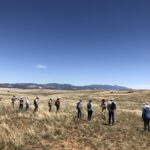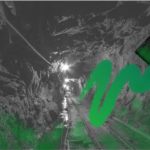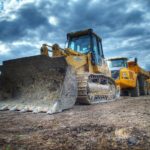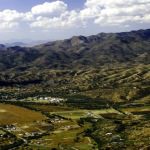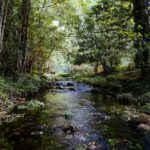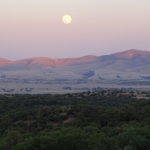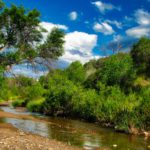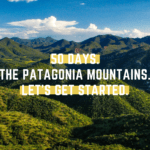Linda Lopez and Don Woolley are candidates for Arizona Senate District #2. Here are their positions on issues relevant to PARA’s mission to monitor the activities of industrial developers, such as mining corporations, as well as government agencies, to make sure their actions have long-term, sustainable benefits to our public land, our watershed, and our communities.
1. When considering an industry’s promise to bring jobs to our community, what other factors would you consider when deciding whether or not the overall impact of such activity would ultimately be good for the long term sustainability of our communities?
LINDA LOPEZ
Impact on the environment and quality of life for surrounding communities.
DON WOOLLEY
Very important factors are economic livelihood, the economic viability of the company, impact to quality of life, and job creation; therefore, the questions that should be asked are, how many jobs are affected by this industry/company? How are other local industries affected? How much will total wages change, and how does this change contribute to consumer demand? How much additional non-residential space will be supported? What new state and local tax revenues will be generated? What is the overall contribution of this company to the local economy? What is the impact to the “quality of life” of the residents of this community? What is the economic health of the company itself? In my mind, all of these questions must be addressed in any scenario, and quantity of our water resource.
2. As we desert dwellers are aware, water is a precious resource. What actions will you take to assure protection of the quality
LINDA LOPEZ
Any development activities including residential development must consider the long term impact on the supply and quality of water available for current activities. All proposals must undergo a thorough review by experts.
Arizona State Senator District 2
DON WOOLLEY
I certainly support the Arizona Department of Environmental Quality, which was originally conceived and implemented by the Arizona Legislature to protect the ground water quality in Arizona. We do have to be able to protect taxpayers when there is little or no benefit from greater standards that are very expensive to adopt for any treatment facility/water dept. to comply with. We must get the most “bang for the buck.” In addition, the current intrusion of the EPA on the Navajo Generating Station (Regional Haze rules) would impact Arizona’s water security (CAP), because the Navajo Generating Station provides the power for the Central Arizona Project (not to mention hundreds of job for the Navajo Nation). This is where State Sovereignty, the 10th Amendment of the US Constitution, is so vital to the State of Arizona.
As far as quantity, we are at nature’s mercy every year in Southern Arizona, whether it be Patagonia or the even hotter desert regions in Tucson, Sahuarita, and Green Valley. The Central Arizona Project (CAP) offers some capability to revitalize the aquifer in the region, and should be considered as a vital part of any new proposed water usage in the area. Again, we need to make sure that the CAP is protected, and that includes the supplier of the electricity to the CAP, which is the Navajo Generating Station. We should examine every use of water up and down the Santa Cruz and your river valley, and all current water agreements. There are other proposals in the Sahuarita/GV area such as two thousand plus houses to be built (FICO project) in lieu of the clearing of 100 year old Pecan trees near SE Green Valley area, on Continental Road. Pecan trees use 600 gallons of water per day, so the Pecan farm (FICO) is the largest user of the Santa Cruz aquifer in my area; and I just found out from a Sahuarita city councilman that the city of Tucson has the final say in Sahuarita Water’s allotment of CAP water. CAP water, and the Santa Cruz aquifer, is a big part of the argument for the detractors of the Rosemont Mine project.
3. If you support open pit mining in the Santa Rita Mountains, Canelo Hills, Patagonia Mountains, and the San Rafael Valley, what is your proposed solution for the economic bust that will happen after the mines play out in 20 years (historical track record and what current mining applicants forecast as period of operation)?
LINDA LOPEZ
Although I had been an original proponent of Rosemont Mine I have since learned of the consequences to the area both environmentally and socially as well as in the claims made by the company.
DON WOOLLEY
Although I am not in support of open pit mining as a blanket policy in the areas mentioned (this is where a careful, quantitative risk assessment is vital to the process of allowing any open pit mining), I do not accept the 20 year premise in the question. e.g. Morenci mine is still the largest producer of Copper in the country, which started in the 1800s, and began open pit mining in the 1930s. (Morenci has expansion and therefore additional jobs plans in the works) It could be the case for some operations, but they should each be examined on a case by case basis, and the final rehabilitation plans must be a key part of any open pit and other mining operations. Although not well known, there are some successful stories about open pit mine rehabilitation. The Martha Mine in New Zealand is an example of a success story, it can be done if you want to do it! And the rehabilitation work would provide jobs for years afterwards, once the mining operation is stopped. This is the 21st century, and our advances in so many areas are dramatic and bear no relationship to problems that some focus on that occurred years ago. Technology overcomes many, many obstacles, thanks to free markets and innovation. We need to turn it all loose and break the government chains that are stifling any progress in our economy.
4. What types of support do you suggest for fostering our existing economic business models such as local food production, wineries, eco-tourism, heritage tourism, etc?
LINDA LOPEZ
The state legislature through the Arizona Commerce Authority and the Arizona Tourism has the abilty to provide both direct and indirect support to these activities.
DON WOOLLEY
Ensure that all have adequate water allocations to support their Arizona Commerce Authority endeavor, examine statutes for a domestic farm winery licensing, supporting the creation of new and any existing conservancy’s and parks and natural habitats in the area, and help spread the word about the area. I have lived in Southern Arizona for 11 years, and I do not know a lot about the Patagonia area, other then the Stradling Ranch (Hubbard Museum of the West in Ruidoso, NM was my source), and I have never been there, to date; The best way to support tourism is to get the regional (LD2) and national economy back on track with GDP growth and more jobs. People need jobs to pay for vacations for their families, that is just a fact. LD2 unemployment rate is much higher then the Arizona State average and higher then the national rate (which is really measured by U6, and almost 15%).
Also, it would be great to secure the border so people would not have to worry about confronting drug smugglers in pristine areas, and here is a news flash, they absolutely don’t care about pristine areas of the US.
5. What other visions of sustainable economic activities do you have for our area?
LINDA LOPEZ
Support by the state legislature and by the federal government for the international trade opportunities at the Nogales border crossings will bring revenue to the area as well. More job opportunities will become available leading to more support of the current business community with opportunity for expanding the business community. The border MUST be seen as an asset – not a liability.
DON WOOLLEY
For the sake of the conversation I will exclude mining; some manufacturing jobs could be pursued, via tax incentives, etc., along with the service industry and tourism itself, things such as bicycling (work to get a tour event in the area), also hot-air ballooning, which is big in the Monument Valley area now; we need to look at everything, because the Port of Guaymas in Mexico is a reality now, the first container ship unloaded at the Port of Guaymas in Feb. of this year; transportation from Guaymas to the border and then to the Tucson or Benson areas, to connect with the mainline of the Union Pacific RR, is going to be critical to this new district. And passenger rail service from Nogales to Tucson to Phoenix may become a reality at some point in the future. This corridor to Guaymas opens up world markets to the area, and that includes tourists on Cruise ships that are now docking in the Port of Guaymas, Mexico, and the RR that runs from Guaymas to Hermisillo and on to Nogales.
6. Arizona Proposition 120 asserts State rights over air, water, public lands, minerals, wildlife,and other natural resources within Arizona. What is your position on this Proposition and why?
LINDA LOPEZ
I oppose Proposition 120. I voted against the referendum during session and will vote no when I cast my ballot. I do not trust our state legislature to take the necessary actions to protect these important resources.
DON WOOLLEY
First let’s look at the entirety of Paragraph C of the Proposition that will be on the ballot, which makes a big difference: The State of Arizona declares its Sovereign and exclusive authority and jurisdiction over the air, water, public lands, minerals, wildlife, and other natural resources within its boundaries, except for 1) Territory Established as Indian Reservations by the Government of the United States 2) Land of the United States, or lands that have been Ceded. In a manner prescribed by law, to the United States pursuant to Article I, Section 8, clause 17, Constitution of the United States. (( to exercise exclusive Legislation in all Cases whatsoever, over such District (not exceeding ten miles square), as may, by Cession of particular states, and the Acceptance of Congress, become the seat of the Government of the United States, and to exercise like authority over all places purchased by the consent of the Legislature of the State in which the same shall be, for the erection of Forts, Magazines, Arsenals, dock-Yards, and other needful buildings)).
Interpretation: That the proposition amends the Arizona Constitution to repeal Arizona’s disclaimer of all right and title to the public lands within the state (except Indian Reservations), and to repeal Arizona’s consent to provisions of the Enabling Act (In 1910, the United States Congress passed the Arizona- New Mexico Enabling Act, allowing Arizona to become a state. The Enabling Act also granted Arizona approximately 10.9 million acres of state trust land, subject to terms for the management, operation, use and disposition of those trust lands).
So my response to the question would be this: This is the reaction of the State legislature to the Forest Service and BLM mismanaging forest land within Arizona, and the federal governments lack of communication with state authorities; all logging has been curtailed, thinning of the forests is not being done, and, as a result, large fires in the state have destroyed thousands of acres of forest land. The Forest Service is busy closing off many roads in the National forests to re creationists, fishermen, hunters, etc. There must be communication with the states as far as the water, minerals, etc. The Feds do not communicate, they dictate, and this is the natural reaction to the on-going over-reach of the federal government. Quote, “This is not a secession or nullification Initiative, it is a re-establishment of land rights…the US Government controls 42% of Arizona’s land, and tribal reservations and lands specifically ceded to the federal government with in Arizona (e.g. National Parks) are exempt.” (LD18 committee report)
State law says that this proposition can be voted on, so let’s see what the people of Arizona say on Nov. 6th, and then in 2013 our legislature needs to make a concerted effort to communicate with the Federal agencies that are not cooperating with state governments, and there are many. (Quite frankly, this may not change unless we change administrations). In many cases, I believe the states can be better stewards of their land; there are few examples of Federal Government efficiencies in most things that they do, I don’t have to name them here, I am sure you all know what I am talking about. And it stops any further encroachment by the federal government.
As a non-profit organization with a pending IRS 501-c-3 application, Patagonia Area Resource Alliance (PARA) can not endorse specific candidates. PARA can ask questions of all candidates regarding their positions on issues relevant to PARA’s mission.

